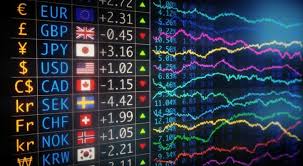
Forex trading can be one of the most exciting and potentially lucrative financial markets for investors. However, understanding the complexities of currency trading requires patience, knowledge, and a solid strategy. This tutorial will guide you through the fundamental aspects of Forex trading and provide useful insights as you start your journey in the exciting world of trading. For beginner traders in Uzbekistan, considering reliable options is vital, and you may want to check out forex trading tutorial Uzbekistan Brokers to start your trading career on a solid foundation.
What is Forex Trading?
Forex, short for foreign exchange, is the global market where currencies are traded. It operates 24 hours a day, five days a week, and is the largest and most liquid financial market in the world. The main objective of Forex trading is to buy one currency while simultaneously selling another. Currencies are traded in pairs (e.g., EUR/USD, USD/JPY), and successful traders aim to profit from changes in exchange rates.
Understanding Currency Pairs
Currency pairs are divided into three categories: major pairs, minor pairs, and exotic pairs. Major pairs include the most traded currencies, such as the US Dollar, Euro, and Japanese Yen. Minor pairs involve currencies from developed countries that are not considered majors, while exotic pairs comprise a major currency and one from a developing economy. Understanding these categories is crucial because they differ in terms of volatility and trading volume.
The Basics of Forex Trading
To start trading in the Forex market, you need to understand some basic concepts:
- Pips: A pip is the smallest price move that a given exchange rate can make, usually the fourth decimal place.
- Leverage: Forex trading often involves leverage, allowing traders to control larger positions with a smaller amount of capital. While it can amplify profits, it also increases risk.
- Lot Sizes: Forex trades are measured in lots, which are standardized amounts of currency. A standard lot is 100,000 units of currency, but there are also mini and micro lots.
Choosing a Forex Broker
Choosing the right Forex broker is crucial for your trading success. Look for brokers that are regulated and offer a trading platform that fits your trading style. Consider factors like spreads, commissions, leverage options, and the types of accounts available. Users in Uzbekistan should pay particular attention to local regulations and resources when selecting a broker.

Developing a Trading Strategy
Having a clear trading strategy is fundamental to successful Forex trading. Here are some popular strategies:
- Day Trading: This strategy involves opening and closing trades within the same day, taking advantage of small price movements.
- Swing Trading: Swing traders hold positions for several days or weeks to benefit from expected upward or downward market shifts.
- Position Trading: This long-term strategy involves holding trades for weeks, months, or even years to capitalize on large market movements.
Technical Analysis Basics
Technical analysis involves studying historical price movements and using various tools like charts and indicators to make trading decisions. Key tools include:
- Moving Averages: These indicators smooth out price data to identify trends over a specific period.
- Relative Strength Index (RSI): An indicator that measures the speed and change of price movements, helping traders identify overbought or oversold conditions.
- Support and Resistance Levels: These are critical price levels where the market often pauses or reverses, serving as entry or exit points for trades.
Fundamental Analysis
In addition to technical analysis, traders should also consider fundamental analysis, which involves analyzing economic indicators, news releases, and other factors that could influence currency movements. Key indicators to watch include:
- Gross Domestic Product (GDP)
- Employment Data
- Inflation Rates
Risk Management in Forex Trading
Risk management is an essential skill in Forex trading. To protect your capital and ensure long-term success, consider the following:
- Set Stop Loss Orders: A stop loss order automatically closes your trade at a set price, limiting potential losses.
- Diversify Your Portfolio: Avoid putting all your capital in a single trade or currency pair to mitigate risk.
- Risk Only What You Can Afford to Lose: Only trade with capital that you can afford to lose; this will help maintain a proper mindset during trading.
The Importance of a Trading Journal
Keeping a trading journal can be invaluable for evaluating your performance. Documenting your trades, strategies, results, and emotional responses can help you identify what’s working and what needs adjustment. This practice encourages continuous learning and improvement.
Conclusion
Forex trading can be a rewarding venture when approached with the right knowledge and tools. By understanding the basics of currency trading, choosing a reliable broker, developing a solid strategy, and managing risks effectively, you can increase your chances of success. Remember that trading carries inherent risks, and continual learning is vital to thriving in this fast-paced environment.
Additional Resources
For further education and tools, consider checking online courses, webinars, and reputable trading forums. Engaging with a community can provide valuable insights and support as you navigate the Forex market.
コメントを残す